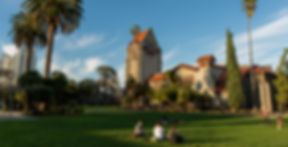

Partial Foot Prosthetic
Fernanda Tapia Marin - Biomedical Engineering Department, SJSU;
Aditya Arora - Biomedical Engineering Department, SJSU;
Krish Verma - Biomedical Engineering Department, SJSU;
Naomi Bolotin - Biomedical Engineering Department, SJSU
Dr. Lin Jiang
Technical Advisor:
In 2021, more than 11% of the American population suffered from diabetes. Of these individuals, about 15% to 25% of them will experience an ulcer, or an open sore, on the bottom of their foot due to poor circulation and nerve damage. Ulcers and their infections can be prevented and treated, but if left untreated, the infection can spread deeper into the foot’s tissue, bones, and blood. The infection can also become incurable and lead to amputation of the toes, part of the foot, or the entire foot, depending on the severity of the infection. Despite the more than 70,000 lower limb amputations performed due to ulcers, advancements in prosthetic technology and existing designs of prosthetic solutions for lower limb partial amputees currently lack a balance between function and aesthetics and are limited. Current treatments require patients to choose between mobility, comfort, and looks instead of having one that processes all three criteria. The current project aims to address this by designing a prosthetic prototype that satisfies these three criteria. The prototype would consist of two main parts, a standard silicone sleeve and a carbon fiber socket that would incorporate independently flexible toes into the design. These toes will allow users to regain mobility through the natural movement of the residual limb while providing an aesthetically pleasing prosthesis, no longer having to sacrifice one for the others.